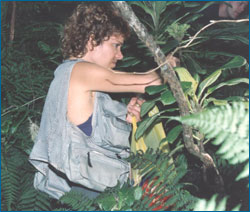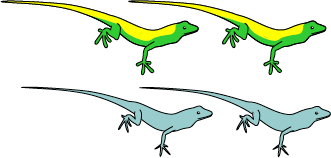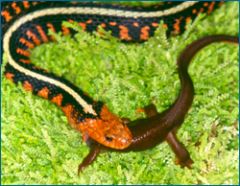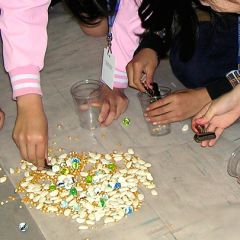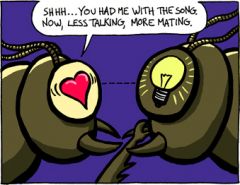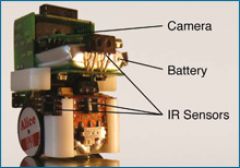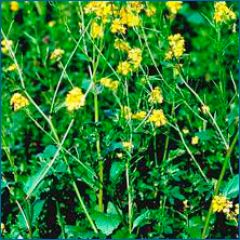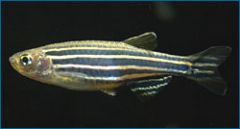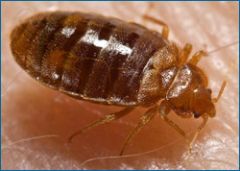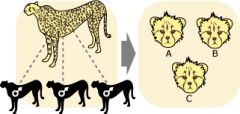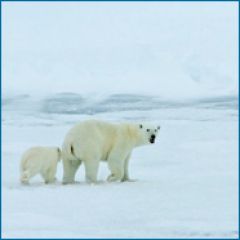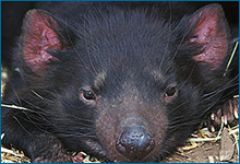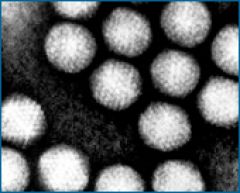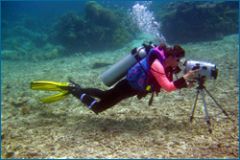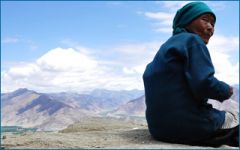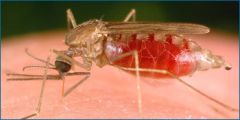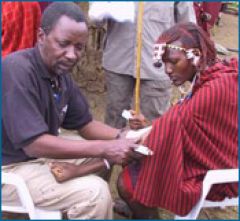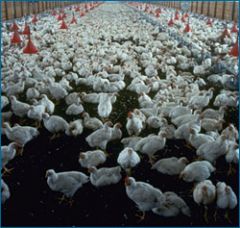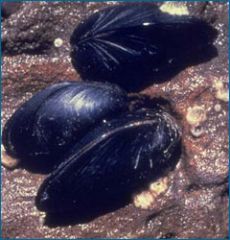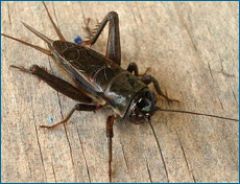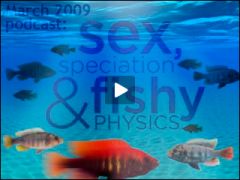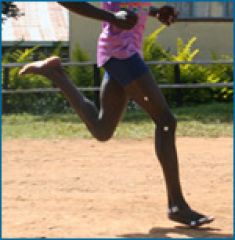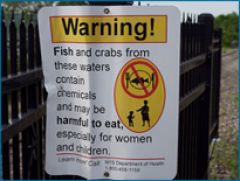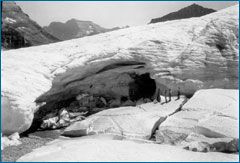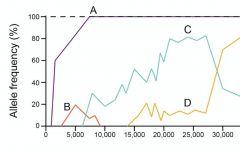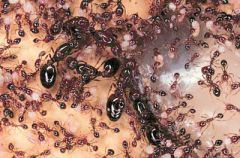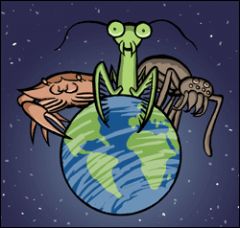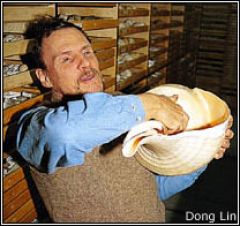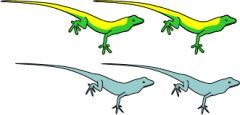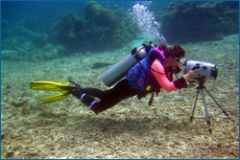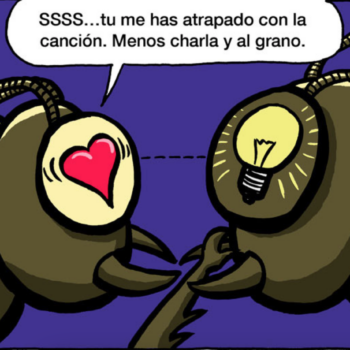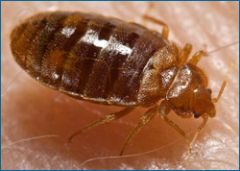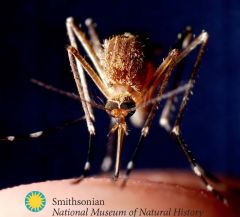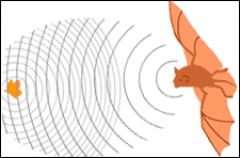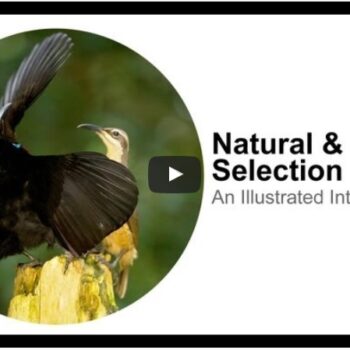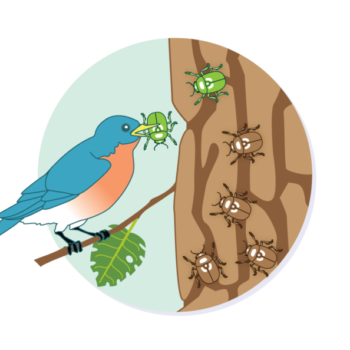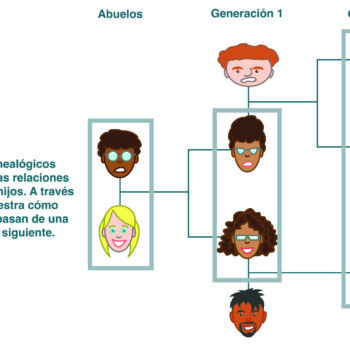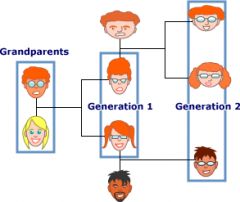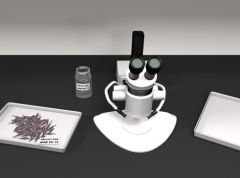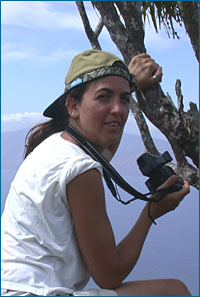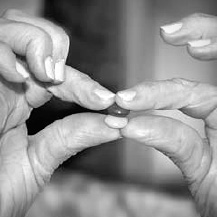Found 62 resources for the concept:
Traits that confer an advantage may persist in the population and are called adaptations. (LS4.B, LS4.C)
Adaptation to altitude
Grade Level(s):
- 9-12
- 13-16
Source:
- Smithsonian National Museum of Natural History
Resource type:
- Classroom activity
Time: Eight 50-minute class periods
Overview
In this set of sequenced lessons, students learn how to devise an experiment to test the difference between acclimation and adaptation; investigate how scientific arguments show support for natural selection in Tibetans; design an investigation using a simulation based on the Hardy-Weinberg principle to explore mechanisms of evolution; and devise a test for whether other groups of people have adapted to living at high altitudes.
Adaptation: The case of penguins
Grade Level(s):
- 9-12
- General
Source:
- Visionlearning
Resource type:
- Article
Time: 20 minutes
Overview
The process of natural selection produces stunning adaptations. Learn about the history of this concept, while you explore the incredible adaptations that penguins have evolved, allowing them to survive and reproduce in a climate that reaches -60°C!
This article appears at Visionlearning.
Aloha, spider style! The work of Rosemary Gillespie
Grade Level(s):
- 9-12
- 13-16
- General
Source:
- UC Museum of Paleontology
Resource type:
- Research profile
Time: one class period
Overview
This research profile follows Dr. Rosemary Gillespie to Hawaii as she evaluates hypotheses about the evolution of the colorful happy-face spider.
Anolis Lizards
Grade Level(s):
- 9-12
Source:
- Collins, Jennifer
Resource type:
- Lab activity
Time: Two class periods.
Overview
Students "take a trip" to the Greater Antilles to figure out how the Anolis lizards on the islands might have evolved.
Battling bacterial evolution: The work of Carl Bergstrom
Grade Level(s):
- 9-12
- 13-16
- General
Source:
- UC Museum of Paleontology
Resource type:
- Research profile
Time: 30-40 minutes
Overview
This research profile examines how the scientist Carl Bergstrom uses computer modeling to understand and control the evolution of antibiotic resistant bacteria in hospitals.
Biological warfare and the coevolutionary arms race
Grade Level(s):
- 9-12
- 13-16
- Advanced
- General
Source:
- UC Museum of Paleontology
Resource type:
- Article
Time: 45 minutes
Overview
The rough-skinned newt looks harmless enough but is, in fact, packed full of one of the most potent neurotoxins known to man. Find out how an evolutionary arms race has pushed these mild-mannered critters to the extremes of toxicity and how evolutionary biologists have unraveled their fascinating story.
Breeding Bunnies
Grade Level(s):
- 9-12
- 13-16
Source:
- WGBH
Resource type:
- Classroom activity
Time: One class period
Overview
Students simulate breeding bunnies to show the impact that genetics can have on the evolution of a population of organisms.
Candy Dish Selection
Grade Level(s):
- 9-12
- 13-16
Source:
- Tang, Carol
Resource type:
- Classroom activity
Time: 30 minutes
Clipbirds
Grade Level(s):
- 6-8
- 9-12
Source:
- UC Museum of Paleontology
Resource type:
- Classroom activity
Time: One class period
Overview
Students learn about variation, reproductive isolation, natural selection, and adaptation through this version of the bird beak activity.
Comic strip: Survival of the sneakiest
Grade Level(s):
- 6-8
- 9-12
- General
- Student
Source:
- UC Museum of Paleontology
Resource type:
- Comic
Time: 10 minutes
Overview
This comic follows the efforts of a male cricket as he tries to attract a mate, and in the process, debunks common myths about what it means to be evolutionarily "fit."
Evo in the News: “Error. Greed does not compute.”
Grade Level(s):
- 9-12
- 13-16
- Advanced
- General
Source:
- UC Museum of Paleontology
Resource type:
- Evo in the News article
Time: 10 minutes
Overview
This news brief from May 2011 describes how researchers are using tiny robots to study the evolution of altruistic behaviors.
Evo in the news: “Superweed” discovered in Britain?
Grade Level(s):
- 9-12
- 13-16
- General
Source:
- UC Museum of Paleontology
Resource type:
- Evo in the News article
Time: 10 minutes
Overview
This news brief, from October of 2005, describes the discovery of an herbicide resistant weed in Britain and illustrates the relationship between genetic engineering and evolution.
Evo in the news: A fish of a different color
Grade Level(s):
- 9-12
- 13-16
- General
Source:
- UC Museum of Paleontology
Resource type:
- Evo in the News article
Time: 15 minutes
Overview
This news brief, from February 2006, describes how a mutated zebrafish gene may help us understand human evolution and the genes underlying human skin color. Humans and zebrafish both inherited the same pigmentation gene from their common ancestor.
Evo in the news: Bed bugs bite back thanks to evolution
Grade Level(s):
- 9-12
- 13-16
- General
Source:
- UC Museum of Paleontology
Resource type:
- Evo in the News article
Time: 15 minutes
Overview
This news brief of September 2010 examines the resurgence of bed bugs throughout the country, and the real bad news is that those bed bugs have evolved resistance to the chemicals most commonly used for eradication.
Evo in the news: Cheating cheetahs prosper
Grade Level(s):
- 9-12
- 13-16
- General
Source:
- UC Museum of Paleontology
Resource type:
- Evo in the News article
Time: 15 minutes
Overview
Biologists have discovered that female cheetahs consistently seek out multiple mates. This news brief, from July 2007, explains how the evolutionary implications of this behavior may help conservation efforts targeting these endangered animals.
Evo in the news: Conserving the kakapo
Grade Level(s):
- 9-12
- 13-16
- General
Source:
- UC Museum of Paleontology
Resource type:
- Evo in the News article
Time: 15 minutes
Overview
This news brief, from April 2006, chronicles how researchers are using evolutionary theory to guide their strategies for conserving a critically endangered parrot - with some impressive results!
Evo in the news: Coping with climate change
Grade Level(s):
- 9-12
- 13-16
- General
Source:
- UC Museum of Paleontology
Resource type:
- Evo in the News article
Time: 20 minutes
Overview
This news brief from May 2009 explores the difference between phenotypic plasticity and evolutionary change in relation to the media's coverage of climate change.
Evo in the news: Evolution down under
Grade Level(s):
- 9-12
- 13-16
- General
Source:
- UC Museum of Paleontology
Resource type:
- Evo in the News article
Time: 20 minutes
Overview
This news brief, from September of 2008, describes an unusual contagious cancer currently decimating Tasmanian devil populations. Learn about the fascinating interplay between the evolution of the devils and the evolution of the disease.
Evo in the news: Evolution from a virus’s view
Grade Level(s):
- 9-12
- 13-16
- General
Source:
- UC Museum of Paleontology
Resource type:
- Evo in the News article
Time: 20 minutes
Overview
This news brief from December 2007 describes a new virulent strain of the common cold and examines how and why virulence evolves.
Evo in the news: Evolution’s dating and mating game
Grade Level(s):
- 9-12
- 13-16
- General
Source:
- UC Museum of Paleontology
Resource type:
- Evo in the News article
Time: 20 minutes
Overview
This news brief from May of 2008 describes new research on octopus mating and reveals how evolution can favor some surprising courtship behaviors.
Evo in the news: Evolving altitude aptitude
Grade Level(s):
- 9-12
- 13-16
- General
Source:
- UC Museum of Paleontology
Resource type:
- Evo in the News article
Time: 10 minutes
Overview
This news brief from October 2010 examines new research that makes it clear that Tibetan highlanders have not just acclimated to their mountain home; evolutionary adaptations have equipped them with unique physiological mechanisms for dealing with low oxygen levels.
Evo in the news: Fighting the evolution of malaria in Cambodia
Grade Level(s):
- 9-12
- 13-16
- General
Source:
- UC Museum of Paleontology
Resource type:
- Evo in the News article
Time: 30 minutes
Overview
This news brief from December 2009 focuses on one of the world's most deadly infectious diseases: malaria. Malaria is normally treatable, but now some strains are evolving resistance to our most effective drug. Find out how researchers and doctors are trying to control the evolution of the disease.
Evo in the news: Got lactase?
Grade Level(s):
- 9-12
- 13-16
- Advanced
- General
Source:
- UC Museum of Paleontology
Resource type:
- Evo in the News article
Time: 20 minutes
Overview
The ability to digest milk is a recent evolutionary innovation that has spread through some human populations. This news brief from April 2007 describes how evolution has allowed different human populations to take advantage of the nutritional possibilities of dairying and links evolution with the prevalence of lactose tolerance among people of different ethnicities.
Evo in the news: Livestock kick a drug habit
Grade Level(s):
- 9-12
- 13-16
- General
Source:
- UC Museum of Paleontology
Resource type:
- Evo in the News article
Time: 10 minutes
Overview
This news brief, from September of 2005, describes the FDA ban on the use of the antibiotic Baytril in poultry production. The decision was made in order to reduce the danger presented by the evolution of antibiotic resistant bacteria.
Evo in the news: Musseling in on evolution
Grade Level(s):
- 9-12
- 13-16
- General
Source:
- UC Museum of Paleontology
Resource type:
- Evo in the News article
Time: 15 minutes
Overview
This news brief, from September 2006, reviews a recent case of evolution in action. In just 15 years, mussels have evolved in response to an invasive crab species. Find out how biologists uncovered this example of evolution on double time.
Evo in the news: Quick evolution leads to quiet crickets
Grade Level(s):
- 9-12
- 13-16
- General
Source:
- UC Museum of Paleontology
Resource type:
- Evo in the News article
Time: 20 minutes
Overview
The tropical island of Kauai has always been a quiet place, but now it may be getting even more quiet. This news brief, from December 2006, reveals how Kauai's cricket population has evolved into a "chirpless" variety in just a few years.
Evo in the news: Sex, speciation, and fishy physics
Grade Level(s):
- 9-12
- 13-16
- Advanced
- General
Source:
- UC Museum of Paleontology
Resource type:
- Evo in the News article
Time: 20 minutes
Overview
More than 500 species of cichlid fish inhabit Africa's Lake Victoria. This news brief from March 2009 explains new research suggesting that the physics of light may have played an important role in cichlid diversification and in the recent drop in their diversity.
Evo in the news: The evolutionary history of jogging
Grade Level(s):
- 9-12
- 13-16
- General
Source:
- UC Museum of Paleontology
Resource type:
- Evo in the News article
Time: 30 minutes
Overview
This news brief from March 2010 describes a new fitness trend: barefoot running. Though it might sound like just another fitness fad, soon to go the way of hula-hoops or jazzercise, this trend has a surprising connection to evolution.
Evo in the news: Toxic river means rapid evolution for one fish species
Grade Level(s):
- 9-12
- 13-16
- General
Source:
- UC Museum of Paleontology
Resource type:
- Evo in the News article
Time: 10 minutes
Overview
This news brief from March 2011 examines the genetic basis for the evolution of resistance to PCBs in the Hudson River tomcod. Though this is great for the tomcod, what might it mean for other organisms in the ecosystem?
Evo in the news: Warming to evolution
Grade Level(s):
- 9-12
- 13-16
- General
Source:
- UC Museum of Paleontology
Resource type:
- Evo in the News article
Time: 15 minutes
Overview
Global warming increasingly affects many aspects of our environment, from the sea level to tropical storm strength. But that's far from the full story. This news brief from July 2006 describes how global warming has already begun to affect the evolution of several species on Earth.
Evolution and Antibiotic Resistance
Grade Level(s):
- 9-12
- 13-16
Source:
- WGBH
Resource type:
- Classroom activity
Time: One to three class periods
Overview
Students learn why evolution is at the heart of a world health threat by investigating the increasing problem of antibiotic resistance in such menacing diseases as tuberculosis.
Evolution and E. coli: Natural selection in a constant environment
Grade Level(s):
- 9-12
Source:
- BiteScis
Resource type:
- Classroom activity
Time: Two to three 50-minute class periods
Overview
In this reading-, writing-, and discussion-based activity, students explore bacterial evolution occurring in a stable environment, which counters the intuitive misconception that environmental change is a necessary component to natural selection. A landmark study provides the backdrop against which students can challenge their thinking about what it means for a population to evolve.
Evolution of human skin color
Grade Level(s):
- 9-12
- 13-16
Source:
- Smithsonian National Museum of Natural History
Resource type:
- Classroom activity
Time: Seven to ten 50 minute class periods
Overview
Students examine evidence for the relationship between UV and melanin in other animals; investigate the genetic basis for constitutive skin color humans; learn to test for natural selection in mouse fur color; investigate how interactions between UV and skin color in humans can affect fitness; and explore data on migrations and gene frequency to show convergent evolution of skin color.
Fire ants invade and evolve
Grade Level(s):
- 9-12
- 13-16
- Advanced
- General
Source:
- UC Museum of Paleontology
Resource type:
- Article
Time: 40 minutes
Overview
Understanding the evolution of fire ants may help scientists control the spread of these pests, which have already taken over much of the U.S.
Interactive investigation: The arthropod story
Grade Level(s):
- 6-8
- 9-12
- General
- Student
Source:
- UC Museum of Paleontology
Resource type:
- Online activity or lab
Time: 3-4 class periods
Overview
This interactive investigation delves into the amazing world of the arthropods and examines their success and their evolutionary constraints.
Interview: Geerat Vermeij on the Fossil record
Grade Level(s):
- 9-12
- Advanced
- General
Source:
- California Academy of Sciences
Resource type:
- Interview with Scientist
Time: 20-30 minutes
Overview
This interview with MacArthur Fellow and paleobiologist, Geerat Vermeij, covers much ground, including adaptations in the mollusks he studies, evolutionary arms races, punctuated equilibrium, extinctions, macroevolution, and the value of diversity.
Investigating Natural Selection
Grade Level(s):
- 9-12
- 13-16
Source:
- National Academy of Sciences
Resource type:
- Classroom activity
Time: Three class periods
Overview
Students experience one mechanism for evolution through a simulation that models the principles of natural selection and helps answer the question: How might biological change have occurred and been reinforced over time?
Island biogeography and evolution: Solving a phylogenetic puzzle using molecular genetics
Grade Level(s):
- 9-12
- 13-16
Source:
- Filson, R.P.
Resource type:
- Lab activity
Time: Two full class periods
Overview
Students focus on the evolution of three species of lizards using real data sets — geographical and geological data, then morphology, and finally molecular data — to determine possible phylogenetic explanations.
Juego evolutivo de citas y apareamiento
Grade Level(s):
- 9-12
- 13-16
- General
Source:
- UC Museum of Paleontology
Resource type:
- Evo in the News article
Time: 20 minutes
Overview
Largamente asumidos como solitarios, al menos una especie de pulpo lleva una compleja vida amorosa. El mes pasado, los biólogos Christine Huffard, Roy Caldwell y Farnis Boneka reportaron los resultados de los primeros estudios a largo plazo sobre el comportamiento de apareamiento de pulpos en la naturaleza...
La Supervivencia del más Astuto
Grade Level(s):
- 6-8
- 9-12
- General
- Student
Source:
- UC Museum of Paleontology
Resource type:
- Comic
Time: 10 minutes
Overview
Este cómic nos habla de los esfuerzos de un grillo macho para atraer a una pareja. Y en el proceso, revela (destruye) algunos típicos malentendidos sobre lo que significa estar evolutivamente “adaptado”.
Las chinches de cama pican de nuevo gracias a la evolución
Grade Level(s):
- 9-12
- 13-16
- General
Source:
- UC Museum of Paleontology
Resource type:
- Evo in the News article
Time: 15 minutes
Overview
Las chinches de cama puede parecer un viejo problema pasado de moda, sin embargo ahora están de vuelta — y con venganza. Hace cincuenta años, estas plagas chupadoras de sangre estaban casi erradicadas en los Estados Unidos gracias, en parte, al uso de pesticidas como el DDT. Hoy, se arrastran entre las sabanas — y atormentan a los desgraciados soñadores — en todo el país...
Malaria
Grade Level(s):
- 9-12
- 13-16
Source:
- Smithsonian National Museum of Natural History
Resource type:
- Classroom activity
Time: Seven 50-minute class periods
Overview
In this advanced 4-lesson curriculum unit, students examine evidence to compare four different explanations for why many malarial parasites are resistant to antimalarial drugs; investigate how scientific arguments using G6PD data show support for natural selection in humans; design an investigation using a simulation based on the Hardy-Weinberg principle to explore mechanisms of evolution; and apply their understanding to other alleles that have evolved in response to malaria.
Mantis shrimp shoulder their evolutionary baggage and bluff
Grade Level(s):
- 6-8
- 9-12
- 13-16
- General
- Student
Source:
- UC Museum of Paleontology
Resource type:
- Article
Time: 30 minutes
Overview
Like all organisms, mantis shrimp carry baggage from their evolutionary history. Find out how this baggage has coaxed them into a deadly bluffing game.
Mecanismos: Los procesos de la evolución
Grade Level(s):
- 9-12
- General
Source:
- UC Museum of Paleontology
Resource type:
- Tutorial
Time: Varies
Overview
Aprende sobre los procesos básicos que han moldeado la vida y producido su asombrosa diversidad.
Este artículo se encuentra en Evolución 101.
Mechanisms of evolution
Grade Level(s):
- 9-12
- General
Source:
- UC Museum of Paleontology
Resource type:
- Tutorial
Time: Varies
Overview
Learn about the basic processes that have shaped life and produced its amazing diversity.
This article is located within Evolution 101.
Natural Selection & Sexual Selection: An Illustrated Introduction
Grade Level(s):
- 6-8
- 9-12
- 13-16
- General
Source:
- Cornell Lab of Ornithology
Resource type:
- Video
Time: 15 minutes
Overview
This illustrated video explores how natural and sexual selection can shape the way animals look and act, sometimes transforming the drab into the magnificent. To access the associated multiple choice and open answer questions, you'll need to register with the site.
Natural selection from the gene up: The work of Elizabeth Dahlhoff and Nathan Rank
Grade Level(s):
- 9-12
- 13-16
- Advanced
Source:
- UC Museum of Paleontology
Resource type:
- Research profile
Time: 30 minutes
Overview
Find out how we investigate evolutionary adaptations by following two scientists and their team as they figure out how the willow leaf beetle survives in different climates.
Natural selection: The basics
Grade Level(s):
- 9-12
- General
Source:
- UC Museum of Paleontology
Resource type:
- Tutorial
Time: 30-40 minutes
Overview
Darwin's most famous idea, natural selection, explains much of the diversity of life. Learn how it works, explore examples, and find out how to avoid misconceptions.
This article is located within Evolution 101.
Origami Birds
Grade Level(s):
- 9-12
Source:
- ENSI
Resource type:
- Classroom activity
Time: Three to four class periods
Overview
Students build and evolve and modify paper-and-straw "birds" to simulate natural selection acting on random mutations.
Relevance of evolution: Medicine
Grade Level(s):
- 9-12
- General
Source:
- UC Museum of Paleontology
Resource type:
- Article
Time: 30-40 minutes
Overview
Explore just a few of the many cases in which evolutionary theory helps us understand and treat disease. Bacterial infections, HIV, and Huntington's disease are highlighted.
Selección natural
Grade Level(s):
- 9-12
- General
Source:
- UC Museum of Paleontology
Resource type:
- Tutorial
Time: 30-40 minutes
Overview
La idea más famosa de Darwin, “La selección Natural”, explica la gran diversidad de la vida. Aprende cómo funciona, explora algunos ejemplos, y descubre cómo evitar falsas ideas.
Este artículo se encuentra en Evolución 101.
Semejanzas y diferencias: Comprendamos las homologías y evolución convergente (nivel bachillerato)
Grade Level(s):
- 9-12
- General
- Student
Source:
- UC Museum of Paleontology
Resource type:
- Online activity or lab
Time: 30 minutes
Overview
Esta investigación interactiva explica qué son las homologías, cómo reconocerlas y cómo es que evolucionan.
Sexo, especiación y física subacuática
Grade Level(s):
- 9-12
- 13-16
- Advanced
- General
Source:
- UC Museum of Paleontology
Resource type:
- Evo in the News article
Time: 20 minutes
Overview
Evolución en las noticias relata una reciente historia que señala como comprender física básica puede revelar como la evolución esta ocurriendo hoy — en especial, como la física de la luz tiene influencia sobre la selección sexual, especiación y el colapso de la biodiversidad, producto de la polución causada por los humanos...
Similarities and differences: Understanding homology and convergent evolution
Grade Level(s):
- 9-12
- General
- Student
Source:
- UC Museum of Paleontology
Resource type:
- Online activity or lab
Time: 30 minutes
Overview
This interactive investigation explains what homologies are, how to recognize them, and how convergent traits evolve.
Stickleback Evolution Virtual Lab
Grade Level(s):
- 9-12
- 13-16
Source:
- Howard Hughes Medical Institute
Resource type:
- Online activity or lab
Time: 3 hours
Overview
This virtual lab teaches skills of data collection and analysis to study evolutionary processes using stickleback fish and fossil specimens.
The Making of the Fittest: Natural Selection and Adaption
Grade Level(s):
- 6-8
- 9-12
- 13-16
- Student
Source:
- Howard Hughes Medical Institute
Resource type:
- Video
Time: 10 minutes
Overview
This 10-minute film describes the research of Dr. Michael Nachman and colleagues, whose work in the field and in the lab has documented and quantified physical and genetic evolutionary changes in rock pocket mouse populations.
The Making of the Fittest: Natural Selection in Humans
Grade Level(s):
- 9-12
- 13-16
- Student
Source:
- Howard Hughes Medical Institute
Resource type:
- Video
Time: 15-30 minutes
Overview
This 14-minute film describes the connection between the infectious parasitic disease malaria and the genetic disease sickle cell anemia - one of the best-understood examples of natural selection in humans.
The Making of the Fittest: The Birth and Death of Genes
Grade Level(s):
- 6-8
- 9-12
- 13-16
- Student
Source:
- Howard Hughes Medical Institute
Resource type:
- Video
Time: 15-20 minutes
Overview
This 13-minute film describes how scientists have pieced together the evolutionary history of the Antarctic icefish by studying its genome – an excellent case study for genetic evolution as both the gain and loss of genes have led to key adaptations.
The Natural Selection Game
Grade Level(s):
- 9-12
- 13-16
Source:
- Gendron, Robert
Resource type:
- Classroom activity
Time: 1 to 2 class periods
Overview
This is a board game that simulates natural selection. It is suitable for an introductory biology class and for more advanced classes where you could go into more detail on important principles such as the role of variation and mutation.
Using trees to understand plants: The work of Chelsea Specht
Grade Level(s):
- 9-12
- 13-16
- General
Source:
- UC Museum of Paleontology
Resource type:
- Research profile
Time: 30 minutes
Overview
This research profile follows scientist Chelsea Specht as she pieces together the evolutionary history of tropical plants and their pollinators--and in the process, tries to figure out how to conserve endangered species.
Variations in the clam species Clamys sweetus
Grade Level(s):
- 9-12
Source:
- Howard Hughes Medical Institute
Resource type:
- Classroom activity
Time: 3 x 45-minute sessions
Overview
This series of hands-on activities complements the HHMI DVD Evolution: Constant Change and Common Threads and has been designed to engage students in thinking about the mechanism of natural selection by encouraging them to formulate questions that can be answered through scientific investigation, data collection, and pattern recognition.
Webcast: Endless forms most beautiful
Grade Level(s):
- 9-12
- General
Source:
- Howard Hughes Medical Institute
Resource type:
- Video Lecture
Time: 60 minutes
Overview
In lecture one of a four part series, evolutionary biologist Sean Carroll discusses Darwin and his two most important ideas: natural selection and common ancestry.
This lecture is available from Howard Hughes' BioInteractive website.


